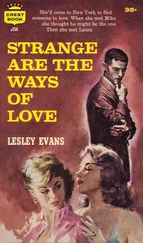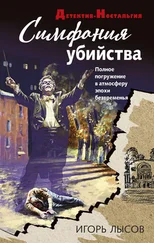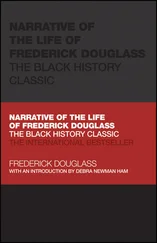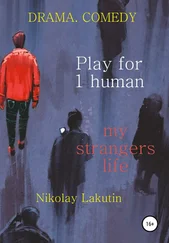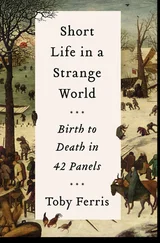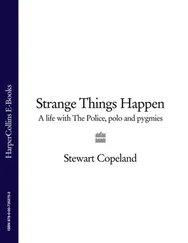Douglas Hofstadter - I Am a Strange Loop
Здесь есть возможность читать онлайн «Douglas Hofstadter - I Am a Strange Loop» весь текст электронной книги совершенно бесплатно (целиком полную версию без сокращений). В некоторых случаях можно слушать аудио, скачать через торрент в формате fb2 и присутствует краткое содержание. Жанр: Прочая документальная литература, на английском языке. Описание произведения, (предисловие) а так же отзывы посетителей доступны на портале библиотеки ЛибКат.
- Название:I Am a Strange Loop
- Автор:
- Жанр:
- Год:неизвестен
- ISBN:нет данных
- Рейтинг книги:4 / 5. Голосов: 1
-
Избранное:Добавить в избранное
- Отзывы:
-
Ваша оценка:
- 80
- 1
- 2
- 3
- 4
- 5
I Am a Strange Loop: краткое содержание, описание и аннотация
Предлагаем к чтению аннотацию, описание, краткое содержание или предисловие (зависит от того, что написал сам автор книги «I Am a Strange Loop»). Если вы не нашли необходимую информацию о книге — напишите в комментариях, мы постараемся отыскать её.
I Am a Strange Loop — читать онлайн бесплатно полную книгу (весь текст) целиком
Ниже представлен текст книги, разбитый по страницам. Система сохранения места последней прочитанной страницы, позволяет с удобством читать онлайн бесплатно книгу «I Am a Strange Loop», без необходимости каждый раз заново искать на чём Вы остановились. Поставьте закладку, и сможете в любой момент перейти на страницу, на которой закончили чтение.
Интервал:
Закладка:
Page 239 someone trying to grapple with quantum-mechanical reality… [Pais 1986], [Pais 1992], and [Pullman] portray the transition period between the Bohr atom and quantum mechanics, while [Jauch] and [Greenstein and Zajonc] chart remaining mysteries.
Page 239 it might be tempting for some readers to conclude that in the wake of Carol’s death… See Chapter 15 of [Hofstadter 1997], another place where I discuss many of these ideas.
Page 242 meaning of the term “universal machine”… See [Hennie] and [Boolos and Jeffrey].
Page 248 concepts are active symbols in a brain… See Chapter 11 of [Hofstadter 1979].
Page 252 a marvelous pen-and-ink “parquet deformation” drawn in 1964… For a dozen-plus examples of this subtle Escher-inspired art form, see Chapter 10 of [Hofstadter 1985].
Page 260 It is not easy to find a strong, vivid metaphor to put up against the caged-bird metaphor… The idea of a soul distributed over many brains brought to my mind an image from solid-state physics, the field in which I did my doctoral work. A solid is a crystal, meaning a periodic lattice of atoms in space, like the trees in an orchard but in three dimensions instead of two. In some solids (those that do not conduct electricity), the electrons “hovering” around each atomic nucleus are so tightly bound that they never stray far from that nucleus. They are like butterflies that hover around just one tree in the orchard, never daring to venture as far as the next tree. In metals, by contrast, which are excellent conductors, the electrons are not timid stay-at-homes stuck to one tree, but boldly float around the entire lattice. This is why metals conduct so well.
Actually, the proper image of an electron in a metal is not that of a butterfly fickly fluttering from one tree to another, never caring where it winds up, but of an intensity pattern distributed over the entire crystal at once — in some places more intense, in other places less so, and changing over time. One electron might better be likened to an entire swarm of orange butterflies, another electron to a swarm of red butterflies, another to a swarm of blue butterflies, and so on, with each swarm spread about the whole orchard, intermingling with all the others. Electrons in metals, in short, are anything but tightly bound dots; they are floating patterns without any home at all.
But let’s not lose track of the purpose of all this imagery, which is to suggest helpful ways of imagining what a human soul’s essence is. If we map each tree (or nucleus) in the crystal lattice onto a particular human brain, then in the tight-binding model (which corresponds to the caged-bird metaphor), each brain would possess a unique soul, represented by the cloud of timid butterflies that hover around it and it alone. By contrast, if we think of a metal, then the cloud is spread out across the whole lattice — which is to say, shared equally among all the trees (or nuclei). No tree is privileged. In this image, then (which is close to Daniel Kolak’s view in I Am You ), each human soul floats among all human brains, and its identity is determined not by its location but by the undulating global pattern it forms.
These are extremes, but nothing keeps us from imagining a halfway situation, with many localized swarms of butterflies, each swarm floating near a single tree but not limited to it. Thus a red swarm might be centered on tree A but blur out to the nearest dozen trees, and a blue swarm might be blurrily centered on tree B, a yellow swarm around tree C, etc. Each tree would be the center of just one swarm, and each swarm would have just one principal tree, but the swarms would interpenetrate so intimately that it would be hard to tell which swarm “belonged” to which tree, or vice versa.
This peculiar and surreal tale, launched in solid-state physics but winding up with imagery of interpenetrating swarms of colored butterflies fluttering in an orchard, gives as clear a picture as I can paint of how a human soul is spread among brains.
Page 264 Many of these ideas were explored …in his philosophical fantasy “Where Am I?”… This classic piece can be found in [Dennett 1978] and in [Hofstadter and Dennett].
Page 267 internal conflict between several “rival selves”… Chapter 13 of [Dennett 1991] gives a careful discussion of multiple personality disorder. See also [Thigpen and Cleckley], from which a famous movie was made. See also [Minsky 1986] and Chapter 33 of [Hofstadter 1985] for views of a normal self as containing many competing subselves.
Page 267 in such cases Newtonian physics goes awry… See [Hoffmann] for a discussion of the subtle relationship between relativistic and Newtonian physics.
Page 271 every entity…is conscious… See [Rucker] for a positive view of panpsychism.
Page 276 because now they want the symbols themselves to be perceived… See the careful debunking in [Dennett 1991] of what its author terms the “Cartesian Theater”.
Page 277 to trigger just one familiar pre-existing symbol… This sentence is especially applicable to the nightmare of preparing an index. Only if one has slaved away for weeks on a careful index can one have an understanding of how grueling (and absurd) the task is.
Page 278 when its crust is discarded and its core is distilled… See [Sander], [Kahneman and Miller], [Kanerva], [Schank], [Boden], and [Gentner et al. ] for discussions of the analogy-based mechanisms of memory retrieval, which underlie all human cognition.
Page 279 to simplify while not letting essence slip away… See [Hofstadter 2001], [Sander], and [Hofstadter and FARG]. To figure out how to give a computer the rudiments of this ability has been the Holy Grail of my research group for three decades now.
Page 279 There is not some special “consciousness locus”… See [Dennett 1991].
Page 282 but we are getting ever closer… See [Monod], [Cordeschi], and [Dupuy 2000] for clear discussions of the emergence of goal-orientedness ( i.e., teleology) from feedback.
Page 283 a physical vortex, like a hurricane or a whirlpool… See Chapter 22 of [Hofstadter 1985] for a discussion of the abstract essence of hurricanes.
Page 283 every integer is the sum of at most four squares… See [Hardy and Wright] and [Niven and Zuckerman] for this classic theorem, the simplest case of Waring’s theorem.
Page 285 to see that brilliant purple color of the flower… See [Chalmers] for a spirited defense of the notion of qualia, and see [Dennett 1991], [Dennett 1998], [Dennett 2005], and [Hofstadter and Dennett], which do their best to throw a wet blanket on the idea.
Page 287 There is no meaning to the letter “b”… See the dialogue “Prelude… Ant Fugue”
(found in both [Hofstadter 1979] and [Hofstadter and Dennett]) for a discussion of how meanings at a high level can emerge from meaningless symbols at a low level.
Page 293 the notion that consciousness is a novel kind of quantum phenomenon… See [Penrose], which views consciousness as an intrinsically quantum-mechanical phenomenon, and [Rucker], which views consciousness as uniformly pervading everything in the universe.
Page 295 Taoism and Zen long ago sensed this paradoxical state… Far and away the best book I have read on these spiritual approaches to life is [Smullyan 1977], but [Smullyan 1978] and [Smullyan 1983] also contain excellent pieces on the topic. These ideas are also discussed in Chapter 9 of [Hofstadter 1979], but from a skeptical point of view.
Page 296 the story of an “I” is a tale about a central essence… See [Dennett 1992] and [Kent].
Читать дальшеИнтервал:
Закладка:
Похожие книги на «I Am a Strange Loop»
Представляем Вашему вниманию похожие книги на «I Am a Strange Loop» списком для выбора. Мы отобрали схожую по названию и смыслу литературу в надежде предоставить читателям больше вариантов отыскать новые, интересные, ещё непрочитанные произведения.
Обсуждение, отзывы о книге «I Am a Strange Loop» и просто собственные мнения читателей. Оставьте ваши комментарии, напишите, что Вы думаете о произведении, его смысле или главных героях. Укажите что конкретно понравилось, а что нет, и почему Вы так считаете.



